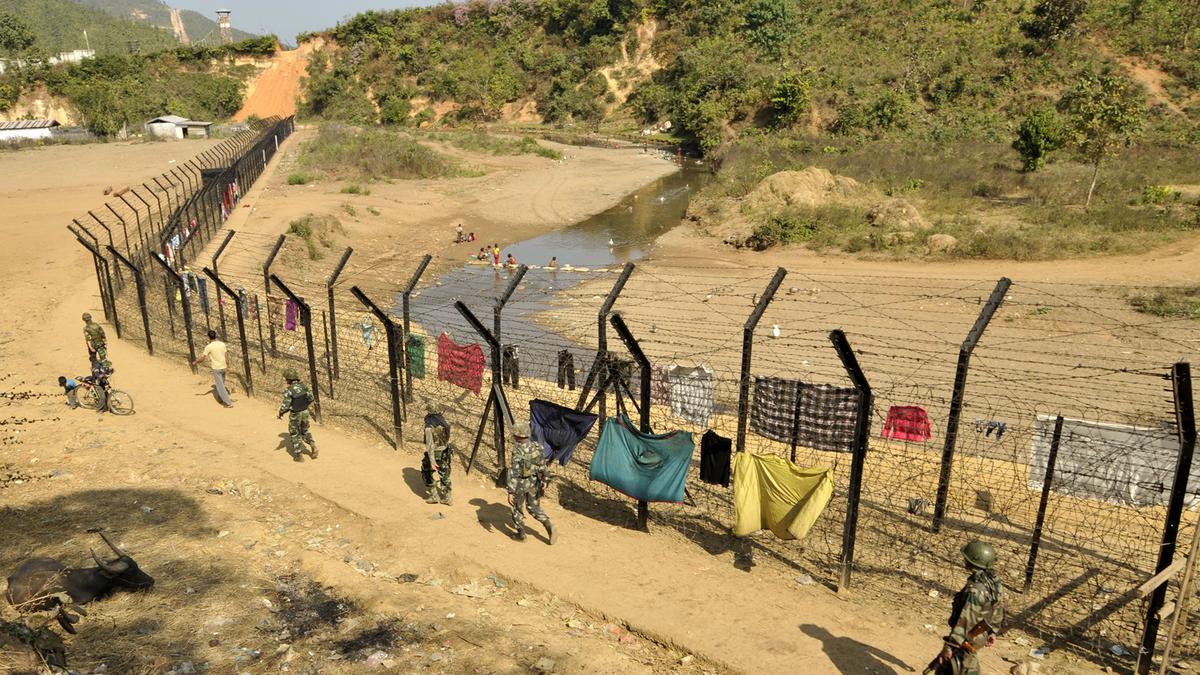In February 2024, Union Home Minister Amit Shah announced that the Free Movement Regime (FMR) along the Myanmar border would be scrapped but there has neither been any notification by the Ministry of External Affairs in this regard nor any bilateral agreement with Myanmar so far. Former Manipur Chief Minister N. Biren Singh’s insistence is said to have led to the decision following complaints that unregulated movement of people from across the border was fuelling the ethnic conflict in his State. Mizoram and Nagaland opposed this decision, which has not yet been implemented on the ground. The FMR came into existence in 1968 as people on either side of the border have familial and ethnic ties. The territorial limit of free movement then was 40 km, which was reduced to 16 km in 2004, and additional regulations were enforced in 2016. Should the FMR between India and Myanmar remain? Henry Zodinliana Pachuau and Likhase Sangtam discuss the pros and cons in a conversation moderated by Rahul Karmakar. Edited excerpts:
How has the FMR impacted the lives of communities along the 1,653 km India-Myanmar border?
Likhase Sangtam: I come from one of the districts bordering Myanmar. The FMR is quite unknown to the communities living on the border. It has become an issue only because of the problem in Manipur. This border was drawn without the consent of the people, and they were quite ignorant about it. But the people in the region did not get affected by the FMR at all because the two countries did not impose any restrictions on their movement.
How justified is the Centre’s security concern? The Centre believes that scrapping the FMR will help stop migration and cross-border crimes.
Likhase Sangtam: That the government wants to scrap the FMR or fence the India-Myanmar border is understandable from a security perspective. The government is worried and is keen to do something sooner rather than later. If the government ignores the problems along the border, that could become an even bigger problem for it.
However, since the people were not taken into account when the FMR was put in place, building a fence could lead to protests. If not handled properly, this could become a bigger problem for the country. The Government of India has to consider many factors — the instability in Myanmar, the presence of armed groups, the drugs that are coming in from the Golden Triangle further away (a region where the jungle borders of Thailand, Laos, and Myanmar meet and which is one of the world’s main illicit drug production and trafficking areas), and the Chinese influence in Myanmar. Then it must take the people into confidence and take a decision.
How practical is the Centre’s plan to fence the border?
The Centre has a rationale behind the decision and the former Manipur Chief Minister’s complaints (that “infiltrators” from Myanmar played a role in the ethnic violence in Manipur) played a part. As in Manipur, many people who have been displaced by Myanmar’s civil war are in Mizoram too, and the community is taking care of them on humanitarian grounds. The situation is affecting the business of the local communities which are dependent on each other and has led to a lot of social problems.
I don’t know what the government intends to do, but fencing has not worked even in advanced countries such as the United States. This may be a copy of the Donald Trump administration’s strategy, but it is very impractical when you consider the terrain and the length of the border, which is almost 1,700 km. It is better to have customs and other departments positioned along the border, which will engage in regular dialogue with their counterparts on the other side. Putting up a fence has never worked and never will work.
Likhase Sangtam: Erecting a fence along the entire stretch is going to be daunting task, and it’s going to be a big challenge for the government to implement it, especially if the people are not taken into account. There will be a lot of resistance as there are many communities every 5-6 km. Handling them will not be easy.
Will a barrier stoke the old demand for a unified homeland as many communities are divided by a border that they did not opt for?
Likhase Sangtam: If the Government of India is not tactful on this issue, there is a high possibility that the people’s demand for a common homeland will be reignited. In Nagaland in particular, the border is along the eastern region, where there is a demand for the creation of Frontier Nagaland. The people in this region are quite neglected, and the unemployment rate is high. A good number of educated youth from this region have not been absorbed into the system. So, when such decisions are taken without the consent of the people, this may work against the country or the government.
So, do you think the FMR should stay? If not, what can be a win-win alternative?
Likhase Sangtam: The FMR cannot continue like this. The situation is unpredictable in Myanmar. If we don’t come up with a certain mechanism to check the flow of people from Myanmar to India, it is not going to be good for the country. But at the same time, since we have not taken the people into consideration, putting a fence is not going to work. So, we really need to educate the people in India about the problems in the region, take the people into confidence, and arrive gradually at a decision.
Henry Zodinliana Pachuau, Professor of Social Work, Mizoram University; Likhase Sangtam, Associate Professor, Political Science, Nagaland University
Published – March 28, 2025 01:26 am IST
